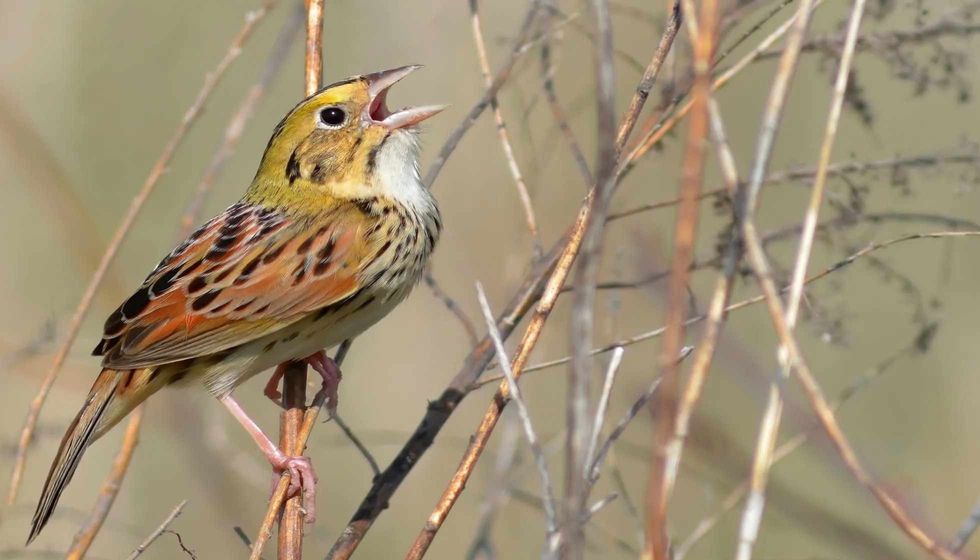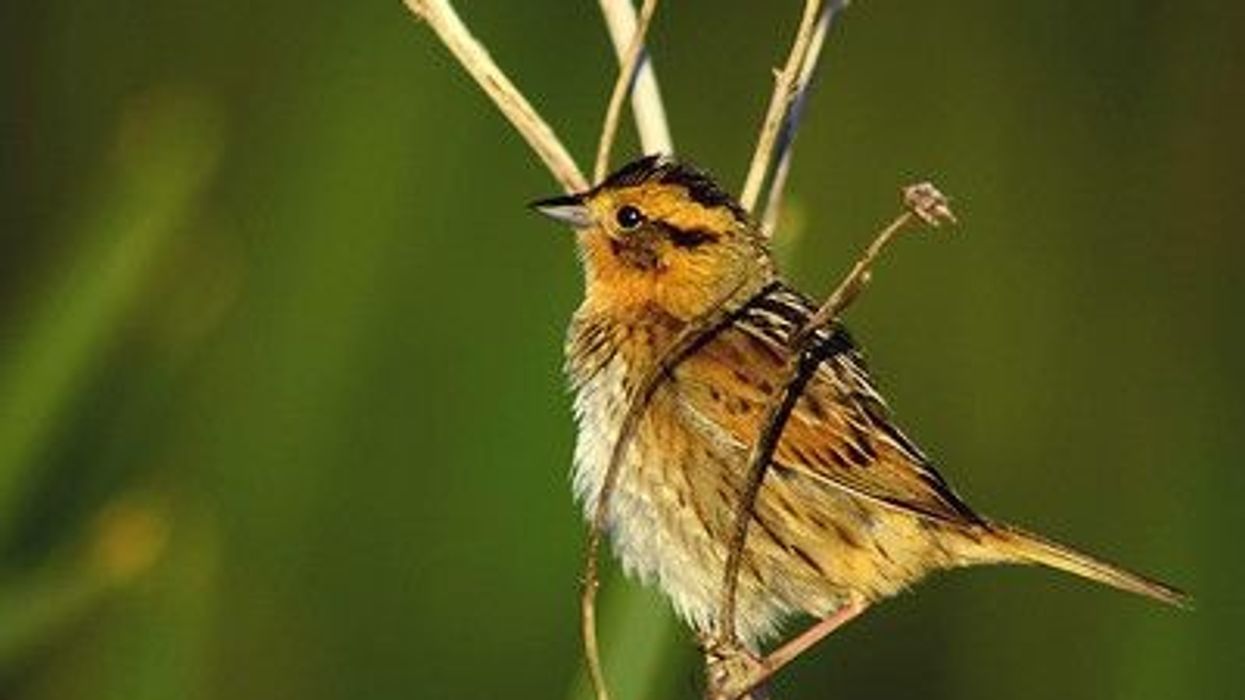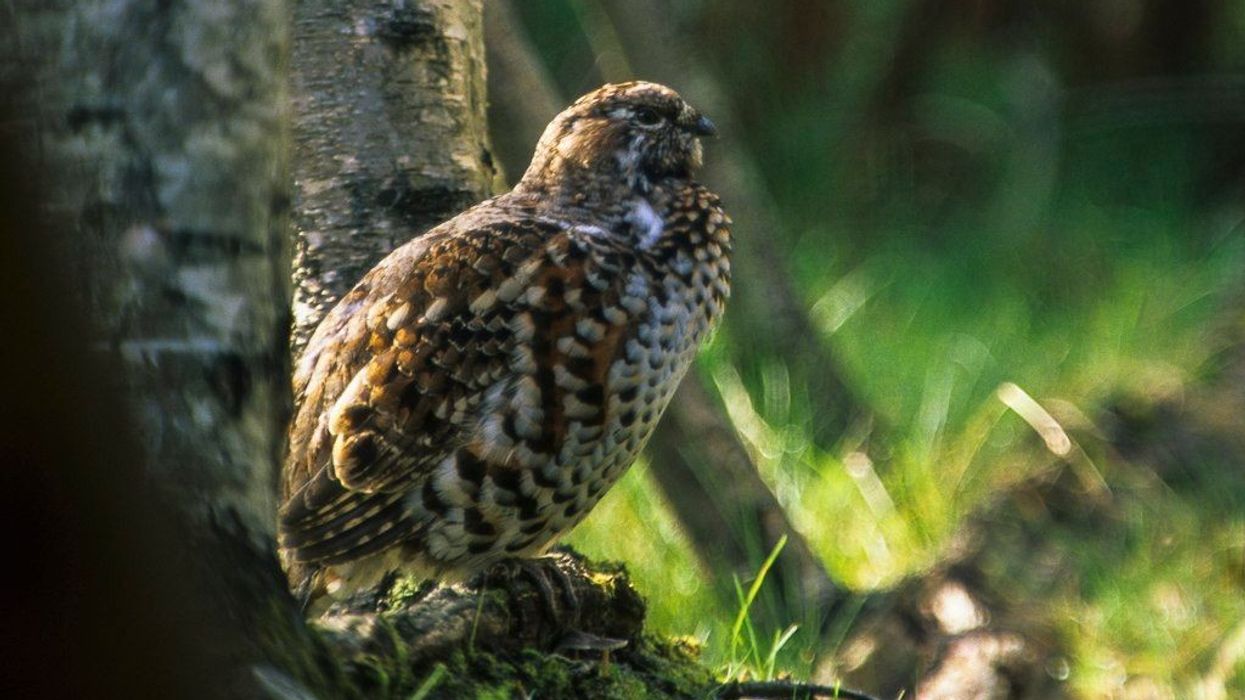The Henslow's sparrow (Centronyx henslowii) is a perching bird of the family Passerellidae. The Henslow's sparrow has brownish upperparts and whitish underparts and produces alternating rapid wing beats.
This bird feeds on insects in the summer and berries in winter. John James Audubon named the bird after and in honor of John Stevens Henslow, a minister, and botanist.
They were previously placed in the genus Emberiza and were called Henslow's bunting. The extant subspecies that are generally accepted are western Henslow's sparrow (C. h. henslowii) and eastern Henslow's sparrow (C. h. susurrans).
The genus Centronyx consists of two species, Henslow's sparrow and Baird's sparrow (Centronyx bairdii). Passerellidae is a seed-eating bird family and consists of New World passerine birds.
Even though they are listed 'Least Concern,' these birds face threats to their population due to human activities. So, these birds are being observed in Christmas Bird Count and North American Breeding Bird Survey to improve conservation efforts.
Read some fun bee-eater and hummingbird facts
Henslow's Sparrow Interesting Facts
What type of animal is Henslow's sparrow?
The Henslow's sparrow previously named Ammodramus henslowii (Audubon, 1829) is a songbird of the order Passeriformes and phylum Chordata. These birds are strictly colonial like gulls, swallows, terns, or herons.
This bird is a migratory diurnal bird. Males do show dominance over their territory and are non-territorial in winter and are secretive during migration. As per the Cornell Lab of Ornithology, this sparrow is secretive and prefers to walk or run on the ground when threatened and they also forage near or on the ground.
Also, this sparrow's flight is erratic and short. Territorial males sing hidden on the ground or from exposed perch.
What class of animal does a Henslow's sparrow belong to?
The Henslow's sparrows belong to the class of Aves of animals.
How many Henslow's sparrows are there in the world?
The populations of Henslow's sparrows in their suitable habitat in the world are around 79,000 individuals.
Where does a Henslow's sparrow live?
The extension of Henslow's sparrow range is throughout North American. The winter and summer range of habitat is between the south-east United States and south-east Canada.
Their winter migrating range is in the Gulf coast states and mid-Atlantic around Texas and Florida. By the month of May, they reach the northern range in New England, southern Ontario, and eastern South Dakota.
It has been suspected that the Henslow's sparrows bred and settled in a prairie range of habitat. Now, due to the loss of their habitat, the distribution of Henslow's sparrow's populations can be found in north and east parts in weedy grassland habitats.
What is a Henslow's sparrow's habitat?
Henslow's sparrows prefer a range of habitat around an old field or uncultivated weedy grassland with a substantial layer for them to nest in and stalks for singing birds. Their natural ranges of habitat include vegetation height (tall and dense grass), number of standing dead herbaceous stems, and litter depth.
They can also settle in grasslands. However, smaller habitats can also be used.
They can be found in meadows and open fields with grass interspersed with weed, shrubby vegetation, un-moved hayfields, especially in low-lying or wet areas nest to salt marshes.
They usually do not occupy overgrazed habitats, but can survive around partly or moderately grazed pastures. As per the Cornell Lab of Ornithology, the distribution of their populations can occur in fire-maintained pine savannahs.
Who do Henslow's sparrows live with?
Henslow's sparrows live on their own in loose flocks. These flocks can be found around resources or their habitats.
How long does a Henslow's sparrow live?
The life span of Henslow's sparrows (Ammodramus henslowii, Audubon, 1829) is short around two to three years, which extends up to six years.
How do they reproduce?
The breeding season of these species occurs in summer. After courtship, these North American birds are socially monogamous. Courtship of these species includes evaluation of nesting sites, call of intimacy, and fluttering of wings.
Males return to their breeding sites every year and defend their territories using a song. Most of these birds sing from dead woody vegetation with 3.2 ft (1 m) tall grass.
Females build the nest almost by themselves in early May. The nest is domed or cup-shaped made up of dead leaves and coarse grass lined with finer grass or hair. They build concealed nests and place them either on or near ground above dense clump grass.
They are attached to stems, which lean over the nest providing a partial roof of protection. The first clutch is consists of two eggs per season.
The next clutch for the year is initiated in July or August. These birds breed after a year of their lifetime. Only females incubate the eggs for 10-12 days.
The eggs are glossy white with blotches and speckles. The young ones hatch with brownish-gray down and closed eyes.
The young chicks fledge after nine to 10 days. A study data in Maryland reported that five of these adult males returned to their previous year's breeding and nesting site showing site fidelity. The parents feed the young till they are capable of flight as they are born underdeveloped.
What is their conservation status?
The conservation status of these grassland birds is evaluated as Least Concern. Even though populations of these sparrows are not decreasing in many places, they face the loss of their native grasslands.
As per the Cornell Lab of Ornithology, the Partners in Flight estimated a population of around 410,000 of these North American birds.
The population of these wildlife species has been steadily declining from 1966 till 2015. There are various bird conservation programs to protect the breeding grounds like grassy lands and pastures.
These birds are also being observed in Christmas Bird Count and North American Breeding Bird Survey to improve bird conservation efforts and management. One of the biggest threats faced by these species is the loss of breeding habitat.
They are listed as Endangered in Canada and other seven states in the United States and as Special Concern in four states, and as Threatened in five other states. This bird conservation also requires the creation and management of undisturbed grasslands.
A study about breeding birds of weedy grassland habitats with tall grasses within Illinois suggests that large grasslands can be managed so as to provide a mosaic of mowed and unmowed or burned and unburned areas.
Mowing instead of grazing is a better way to manage the habitats. However, a risk of mowing that adult birds get killed.
Henslow's Sparrow Fun Facts
What do Henslow's sparrows look like?
These North American birds or Ammodramus henslowii (Audubon, 1829) are one of the smallest sparrows of the New World sparrow family. They have a large flat head, a short tail, and a large gray bill.
The head is olive color with dark stripes, wings have reddish-brown tinge, and streaked chest. The young ones have a clay-colored body with a black streak on the back and head.
How cute are they?
These grassland birds ( Ammodramus henslowii (Audubon, 1829) ) are small wildlife species and are considered cute.
How do they communicate?
These birds use body language and vocalization to communicate. Henslow's sparrow call is two-syllable 'zee-lick.' Henslow's sparrow song is used to defend the territory. There are also alarm calls, young ones chirping, and courtship songs. It is quite rare to spot them especially during migration, but their song is often heard.
How big is a Henslow's sparrow?
These species are 4.3-5.1 in (11-13 cm) in length. As per the Cornell Lab of Ornithology, these species are smaller than song sparrows but larger than prairie warblers.
How fast can a Henslow's sparrow fly?
The flight of the Henslow's sparrows is erratic, rising and falling with twisting of tail when they begin to fly.
How much does a Henslow's sparrow weigh?
This wildlife species weighs around 0.02-0.03 lb (11-15 g).
What are the male and female names of the species?
There are no specific names given to the female and males Ammodramus henslowii (Audubon, 1829).
What would you call a baby Henslow's sparrow?
There is no specific name given to the baby Henslow's sparrow. They are usually referred to as Henslow's sparrow juvenile or chick.
What do they eat?
They forage in the ground with their thick bill to eat insects. They feed on caterpillars, beetles, grasshoppers, berries, wiregrass, and weed.
Are they poisonous?
These species of the order Passeriformes are not poisonous.
Would they make a good pet?
No, they would not make a good pet. They do well in the wildlife around dense wet weedy meadows and pastures with tall grasses.
Did you know...
The order Passeriformes consists of over 6,500 species with 140 families.
Some of Henslow's sparrow predators are cats, eagles, hawks, and snakes.
Field sparrow is a small and slender sparrow with a long tail, round head, and conical bill.
What's the difference between a Henslow's sparrow and a Savannah sparrow?
Henslow's vs savannah sparrow: Henslow's sparrows have a large flat head olive and gray bill. Savannah sparrow's crown feathers fare up giving the head a peak.
The common call of Henslow's sparrow is 'zee-lick.' The flight call of Savannah sparrow is a seep.
The flight feathers of Henslow's sparrows are reddish-brown whereas of savannah sparrow is blackish-brown.
How did Henslow's sparrows get their name?
These sparrows with large flat heads are named by John James Audubon after and in honor of his friend John Stevens Henslow, a minister, and botanist.
Here at Kidadl, we have carefully created lots of interesting family-friendly animal facts for everyone to discover! For more relatable content, check out these vesper sparrow facts and Savannah sparrow facts.
You can even occupy yourself at home by coloring on one of our free printable bird coloring pages.









